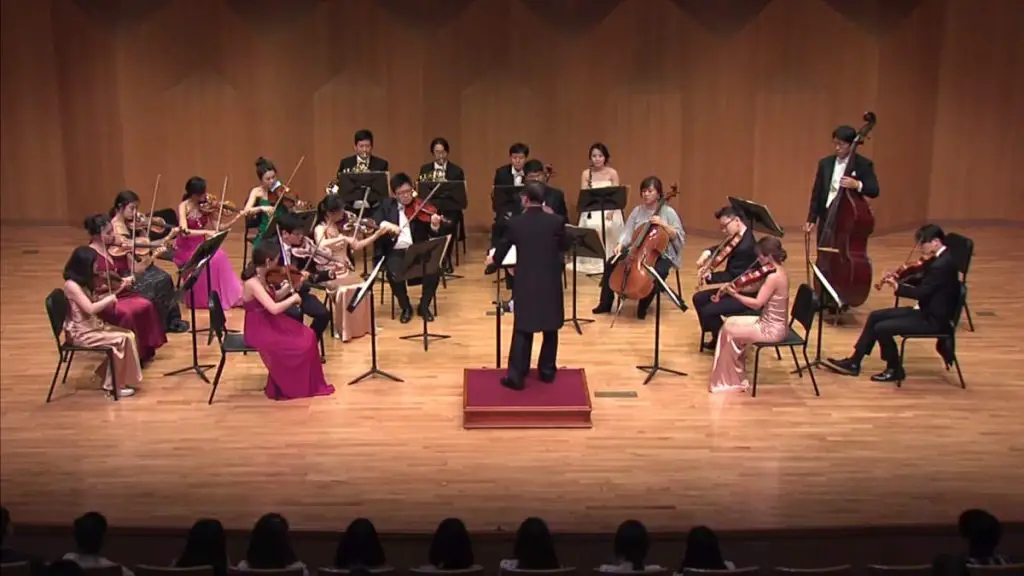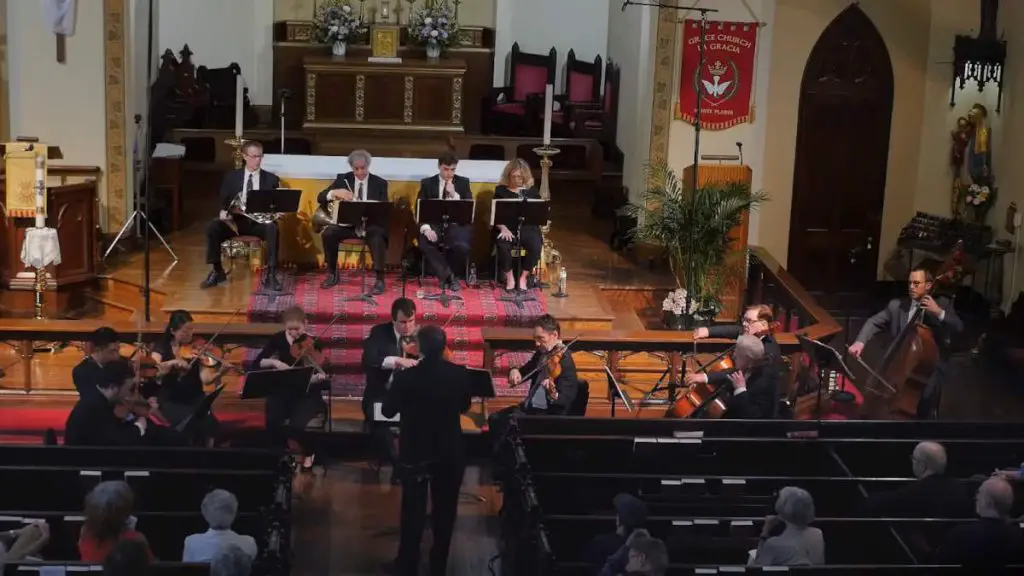Conducted by Jonathan Griffith, the Croatian Chamber Orchestra performs Wolfgang Amadeus Mozart’s Symphony No. 16 in C major, K. 128. This symphony is one of many written during the period in which Mozart stayed in Salzburg, between two trips to Italy. It is the first of three symphonies composed by Wolfgang Amadeus Mozart in May, 1772, when the composer was sixteen years old.
Wolfgang Amadeus Mozart’s Symphony No. 16
Mozart’s Symphony No. 16 in C major, K. 128, composed in 1772 when he was just 16 years old, is a work that exemplifies the youthful energy and mastery of form that would come to characterize his entire oeuvre. This symphony, composed in Salzburg, is part of the prolific output of Mozart’s teenage years, a period during which he was exploring and refining his symphonic style. Despite its early place in his catalog, the symphony demonstrates Mozart’s burgeoning talent for melodic invention, structural coherence, and the skillful handling of the orchestra.
The symphony has the basic scoring of two oboes, two horns, and strings. There are three movements, which is standard for an Italian overture:
- Allegro maestoso, 3/4 The first movement, which is a C major essay in sonata-allegro form, sounds at first to be in 9/8 due to the presence of triplets. However, as it enters the second half of the exposition section it becomes clear that the movement’s meter is actually 3/4. The development section is short, but filled with dense modulations. Some of this developmental spirit carries over into recapitulation, which turns out not to be perfectly literal.
- Andante grazioso, 2/4 The oboes and horns drop out of the second movement, which is another essay in sonata-allegro form, written for the strings alone.
- Allegro, 6/8 The oboes and horns return, in C major, which is a cheerful dance cast in an altered rondo form, with a coda.
Sources
- Symphony No. 16 (Mozart) on Wikipedia
- Symphony No.16 in C major, K.128 (Mozart, Wolfgang Amadeus) on the International Music Score Library Project website


These Mozart Symphonies with the AAM, are in fact conducted by violinist Jaap Schroeder, with Hogwood at the harpsichord.